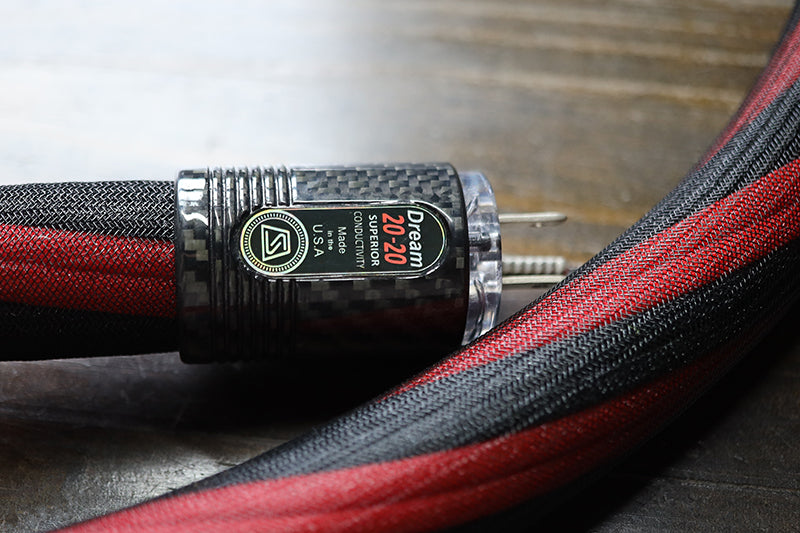Anyone who is not willing to spend more than say $15 on an audiophile component’s power cord should stop reading this right about now. You see, when Serguei Timachev of Stealth Audio Cables offered to send me a sample of his company’s $8,200 Dream 20-20 power cord, I knew that it was an offer that I could not refuse. I have heard good things about Stealth’s products for many years. To boot, the 20-20 is a photogenic looker.
Too many audiophile power cord manufacturers use a certain famous brand of connectors, off-the-shelf copper or silver insulated conductors that are thoughtlessly arranged, and a simple ground circuit. They then slap onto the cord a branded jacket and a four-digit price tag.
The Dream 20-20 is a whole different animal, as of course it should be for the kind of money that will buy a family of four a whole lot of necessities even during these inflationary times. Just as an example, Stealth states, the 20-20’s complex, vibration-reducing, matrix conductor geometry consists of 176 interwoven, individually isolated, oxygen-free copper wires that together are almost an inch thick.
On the outside, the Dream 20-20 features something that I have not seen before – a ferromagnetic collar that slides over the cord’s external length. Stealth states that moving the collar allows the user to tune the cord’s “sound” by manipulating resonances in and around the signal path. Examining the rest of this impeccably-made power cord revealed an extreme attention to detail. The ground pin on the male version of the proprietary connectors, for example, is serrated, i.e., it has teeth that help the connector securely grip the AC receptacle.


The Dream 20-20 won't be mistaken for any other cable.

The Dream 20-20's moveable ferromagnetic collar.
After I broke in the Dream 20-20, it was time for the rubber to hit the road. Finding the approximate areas where the collar caused the cord to perform its best in my system was quick work. As Stealth claims, in or about those areas, everything starts to come into focus in a way that is akin to adjusting a camera’s lens. Finding the exact sweet spot is a lengthier process that can likely be accomplished in some hours, preferably by two people, one who adjusts the collar’s position and another who listens.
Undoubtedly, the Dream 20-20 is among the highest-performing of the many power cords that I have auditioned.
In case you are in the under-$15 crowd and are still reading, I can convey something that was written a long time ago by another reviewer whose name I unfortunately cannot recall. The rough gist of what he said is that while ultra-expensive power cords may not provide the best value in audio, pairing a state-of-the art component with an inexpensive cord that does not let the component reach its full potential is an excellent example of decidedly bad value. Let the hate mail begin.




Above: views of the proprietary connector.

Another look at the adjustable collar.
This article has been edited from the original version.
Howard Kneller’s audiophile adventures are documented on his YouTube channel (The Listening Chair with Howard Kneller) and on Instagram (@howardkneller). His art and photography can also be found on Instagram (@howardkneller.photog). Finally, he posts a bit of everything on Facebook (@howardkneller).



